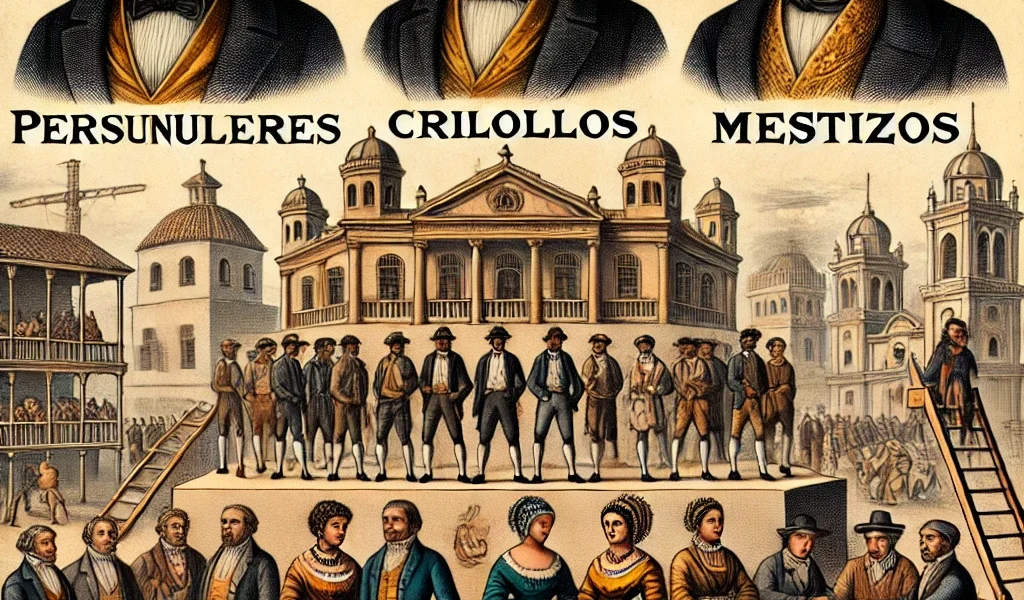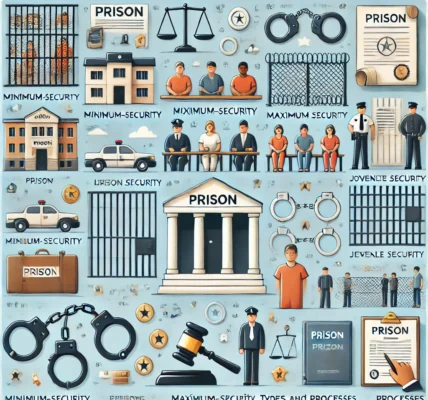Peninsulares, Criollos, and Mestizos – Social Hierarchy in Colonial Latin America
Peninsulares, Criollos, and Mestizos – Social Hierarchy in Colonial Latin America
The social structure of colonial Latin America was complex and highly stratified, with a system that divided people based on race, place of birth, and ancestry. Central to this hierarchy were three key groups: the Peninsulares, Criollos, and Mestizos. These classifications helped maintain control over the population and were instrumental in shaping the social, political, and economic dynamics of the Spanish colonies in the Americas.
This article will explore who the Peninsulares, Criollos, and Mestizos were, their roles within the colonial hierarchy, and how their relationships influenced colonial society.
1. Peninsulares – The Top of the Colonial Hierarchy
The Peninsulares were individuals born in Spain (the Iberian Peninsula) who migrated to the New World. As the colonial elite, they occupied the highest positions in government, the church, and the military, and enjoyed numerous privileges and benefits. The Spanish Crown appointed Peninsulares to key administrative positions, such as viceroys, governors, and high-ranking officials, ensuring that Spain maintained tight control over its colonies.
Key Characteristics of the Peninsulares:
- Place of birth: Born in Spain and sent to the colonies to govern or oversee.
- Power and privilege: Occupied the most prestigious and powerful positions in the colonial administration, including roles in the Catholic Church, military, and trade.
- Loyalty to the Spanish Crown: The Peninsulares were seen as loyal agents of Spain, tasked with protecting Spanish interests and maintaining colonial order.
The Peninsulares were often resented by the Criollos, who were born in the colonies but of pure Spanish descent. This tension between the two groups became a driving force behind later movements for independence across Latin America.
2. Criollos – The Colonial-Born Elite
The Criollos (or Creoles) were Spaniards born in the colonies. Although they shared the same Spanish ancestry as the Peninsulares, they were considered lower in status because they were not born in Spain. Despite this, the Criollos held considerable wealth and influence, often owning vast estates, plantations, and businesses. However, they were largely excluded from the most powerful positions in colonial government and the church, which were reserved for the Peninsulares.
Key Characteristics of the Criollos:
- Place of birth: Born in the Americas, but of full Spanish descent.
- Wealth but limited power: While they controlled significant economic resources, such as land and trade, Criollos were often frustrated by their lack of access to the highest positions of authority.
- Rising discontent: Over time, Criollos began to resent the privileges enjoyed by the Peninsulares, contributing to growing dissatisfaction with Spanish rule.
This dissatisfaction among the Criollos played a crucial role in the independence movements of the early 19th century. Many leaders of these revolutions, including Simón Bolívar in South America and Miguel Hidalgo in Mexico, were Criollos who sought greater autonomy and the removal of Peninsular dominance.
3. Mestizos – The Mixed Heritage Population
The Mestizos were individuals of mixed European (usually Spanish) and Indigenous ancestry. As the colonial period progressed, intermarriage and relationships between Spaniards and Indigenous people became more common, leading to the growth of the Mestizo population. Mestizos occupied a middle-tier position in the social hierarchy, below the Peninsulares and Criollos but above the Indigenous population and enslaved Africans.
Key Characteristics of the Mestizos:
- Mixed ancestry: A combination of European (mainly Spanish) and Indigenous bloodlines.
- Cultural blending: Mestizos often embodied a mix of Spanish and Indigenous cultures, languages, and traditions.
- Limited social mobility: Although Mestizos could sometimes achieve modest social mobility through military service, trade, or the church, they were often restricted in terms of land ownership and access to political power.
The Mestizos played an important role in the labor force of the colonies, working as artisans, merchants, farmers, and in some cases, soldiers. Over time, as the Mestizo population grew, they became a more influential group within colonial society, though they continued to face discrimination and limited opportunities compared to the Peninsulares and Criollos.
The Colonial Caste System
The social structure of colonial Latin America was built on a caste system that categorized people based on their racial background and place of birth. At the top of this system were the Peninsulares and Criollos, followed by Mestizos, Indigenous peoples, and enslaved Africans. The system was designed to preserve the dominance of the Spanish and to enforce racial and social hierarchies.
Caste Hierarchy:
- Peninsulares: Spanish-born elites with the most privilege and power.
- Criollos: Colonial-born Spaniards with significant wealth but limited access to high-ranking positions.
- Mestizos: People of mixed Spanish and Indigenous ancestry, occupying a middle position in the caste system.
- Indigenous Peoples: The native inhabitants of the Americas, often subject to forced labor and displacement.
- Enslaved Africans: Brought to the Americas as part of the transatlantic slave trade, they occupied the lowest rung of the colonial social order.
This rigid system defined many aspects of colonial life, from economic opportunities to legal rights and societal roles.
The Impact of the Social Hierarchy on Colonial Life
The divisions between Peninsulares, Criollos, and Mestizos had significant implications for life in colonial Latin America:
- Political power: The Spanish Crown favored the Peninsulares for political positions, creating resentment among Criollos, who were denied these roles despite their economic contributions.
- Economic control: The Criollos often owned large estates and had substantial economic influence, but their exclusion from political power limited their ability to shape colonial policy.
- Social tensions: The distinctions between these groups created social tensions that contributed to the eventual independence movements. Criollos, in particular, began to advocate for greater autonomy and an end to Peninsular dominance.
- Cultural exchange: The mixing of Spanish, Indigenous, and African cultures gave rise to unique cultural expressions in art, religion, language, and food, which continue to influence Latin American societies today.
Conclusion
The complex social hierarchy of colonial Latin America, with Peninsulares, Criollos, and Mestizos at its core, shaped the political, economic, and cultural landscape of the region. While the Peninsulares held the highest positions of power, the growing resentment among the Criollos and the increasing influence of Mestizos would eventually contribute to the collapse of Spanish colonial rule and the emergence of independent nations throughout Latin America. Understanding the roles of these groups helps to explain many of the social dynamics that persist in the region to this day.



